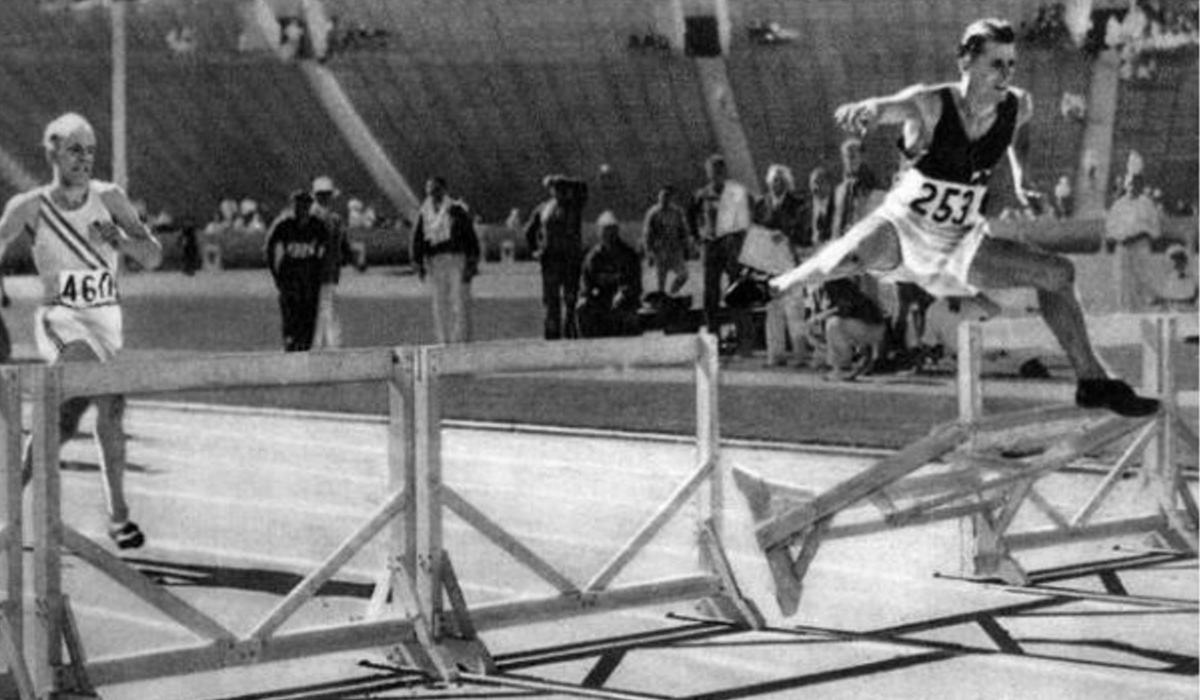Welcome to the second in a series of captivating articles by Run Republic, where we delve deeper into the history of Ireland's track and field Olympic medalists. Following our inaugural article on Pat O'Callaghan, we continue with the fascinating tale of Bob Tisdall, whose exploits at the 1932 Los Angeles Olympics not only secured him a gold medal but also prompted a change in the International Olympic Committee’s rulebook.
"Sport can open up a door, as it were, between men. The world is full of closed doors and drawn curtains, and this Olympic door must therefore never be closed. And those symbolic rings emblazoned above it must be kept bright and shining to bring that peace and goodwill for which the world is craving." — Bob Tisdall, An Olympic Memory, 1960.
Bob Tisdall was born in Ceylon (modern day Sri Lanka) on 16 May 1907 to Irish landed gentry parents, where his father managed a tea and rubber plantation. He would spend the first five years of his life there before moving to Tipperary, his mother's homeland. Sent to boarding school in England at Shrewsbury, his athletic journey was seeded early. His academic and athletic pursuits led him to Cambridge University, where he excelled in track and field, winning four events in the annual intervarsity match against Oxford in 1931 — the shot put, long jump, 120-yard hurdles, and 400 yards flat.
After graduating, Tisdall worked as an aide-de-camp to the Maharaja of Baroda in India, utilising the three languages he had acquired during his childhood in Ceylon. However, the allure of athletics and a dream of representing Ireland at the 1932 Olympics Games taking place in Los Angeles drew him back closer to home. He moved to Sussex to live in a converted railway carriage, supporting himself with farm work while he trained.
Soon he persuaded General Eoin O’Duffy, then president of the Olympic Council of Ireland, via letter, to allow him to trial for the 1932 Irish Olympic team in the 400m hurdles at Croke Park. Although he failed to meet the qualification time at the initial trials on June 3rd, he succeeded on his attempt at the Jones Road venue on June 18th , clocking in at 54.2 seconds.
His tenacity had paid off and earned him a spot on the team after a training stint in Ballybunion, securing his Olympic berth, and found himself departing for Los Angeles less than a month later. The journey from Ireland all the way to the west coast of America was an odyssey in itself. The team sailed to Boston and after a gruelling train ride across America, Tisdall and the Irish team arrived at the Olympic Village exhausted. With limited time to recover and acclimatise, Tisdall initially took his training lightly.
In his first Olympic heat, he advanced to the semi-finals with a time of 54.8 seconds. He dramatically improved to equal the Olympic record of 52.8 seconds in the semis, establishing himself as a gold medal contender.
The final was a tense showdown with accomplished hurdlers such as Lord David Burghley, the 1928 champion, and Morgan Taylor, the 1924 winner. To ease his nerves before the race, Tisdall chatted with Burghley in the tunnel. In a television interview in the 1980s, Tisdall described the experience as 'terrifying' and likened it to how early Christians must have felt when entering the Roman Colosseum. Despite the strong competition, Tisdall triumphed in the 400m hurdles final, clocking what would have been a world record time of 51.7 seconds and becoming Ireland’s second-ever Olympic gold medallist.
Immediately after the win, he selflessly rushed to the aid of his Irish compatriot Pat O'Callaghan, who was still struggling to file down the spikes on his shoes as he attempted to defend his gold medal from the Amsterdam Games four years earlier.
However, due to a technicality—his knee grazed a hurdle—his record was not officially recognised. This incident would later lead to a rule change, allowing future records to stand even if a hurdle is inadvertently touched, provided it does not affect the race outcome. In the early 2000s, Juan Samaranch, the then President of the International Olympic Committee, honoured Bob with a Waterford Crystal rose bowl depicting the iconic hurdle incident.
After his stunning victory, Tisdall was catapulted into the glamorous world of Hollywood, dining with icons like Amelia Earhart and Douglas Fairbanks, Jr. This brush with stardom was only a part of his colorful life post-Olympics. Tisdall's life then involved selling art and jewellery, working on a golf course, and writing "The Young Athlete," a book that influenced young athletes for decades. His adventures spanned continents and careers—from running a gym and nightclub in South Africa to cultivating coffee in Tanzania and before finally settling down in Australia as a farmer.
In 2002, a trio of statues was unveiled at the Nenagh Courthouse to honour North Tipperary's Olympic legends—Bob Tisdall, Matt McGrath, and Johnny Hayes. While Tisdall won gold for Ireland, McGrath and Hayes both clinched gold medals competing for the United States.
Bob continued his athletic involvement well into his later years, running his last race at age 80, and participating in the Sydney Olympics torch relay at 93. He passed away in 2004, remaining the world's oldest track and field Olympic gold medalist up until his death at age 97.
Tisdall's life story, punctuated by his Olympic victory and the significant rule change it prompted, continues to inspire and captivate the Irish athletics community. Today, as we rally behind our heroes like Thomas Barr, our 400m hurdles hopeful for Paris, Bob’s story resonates with us all.

